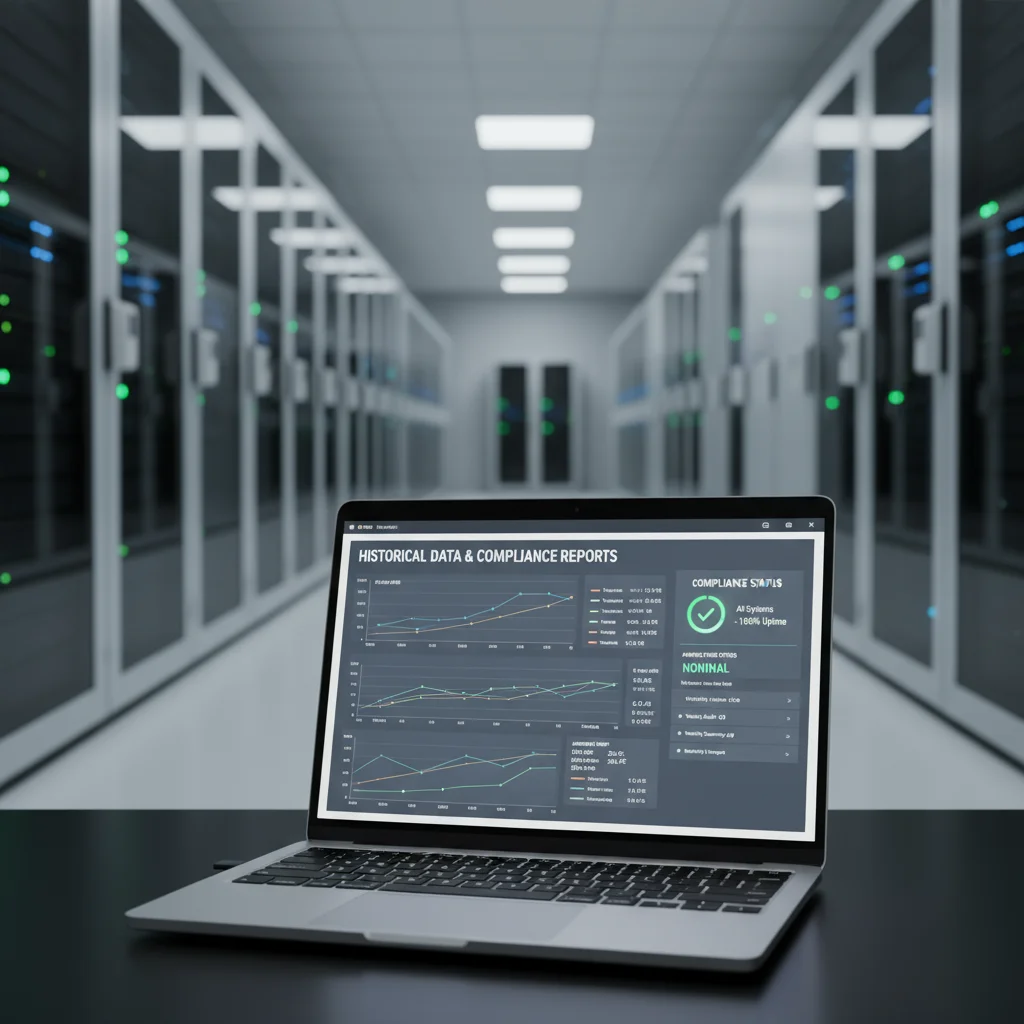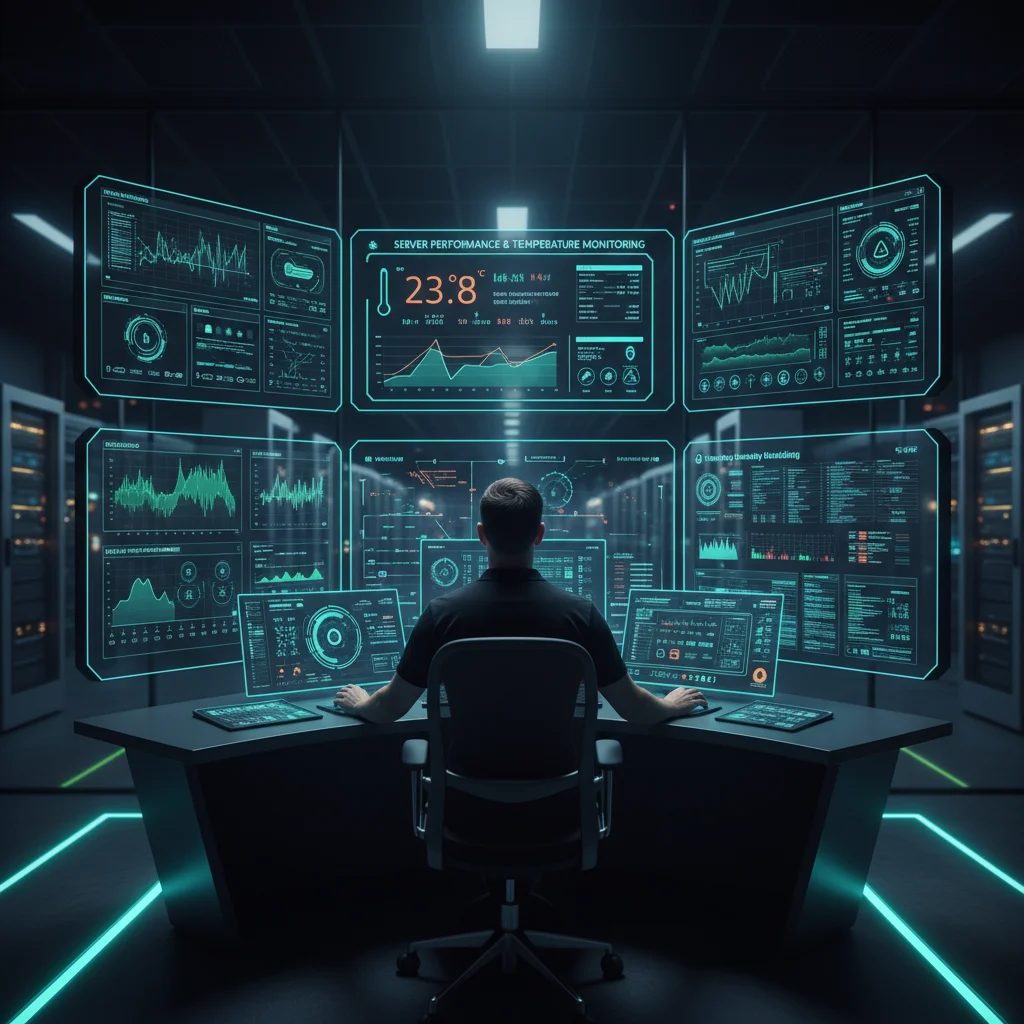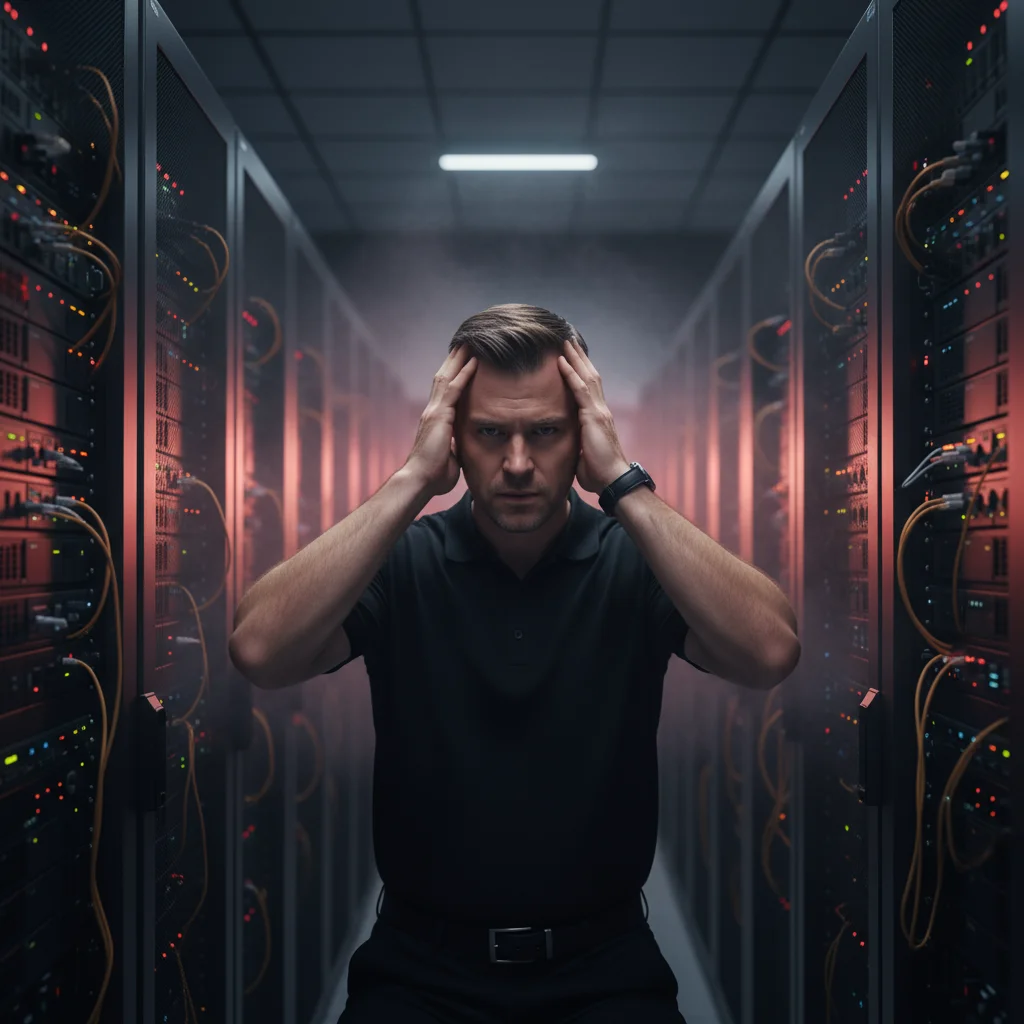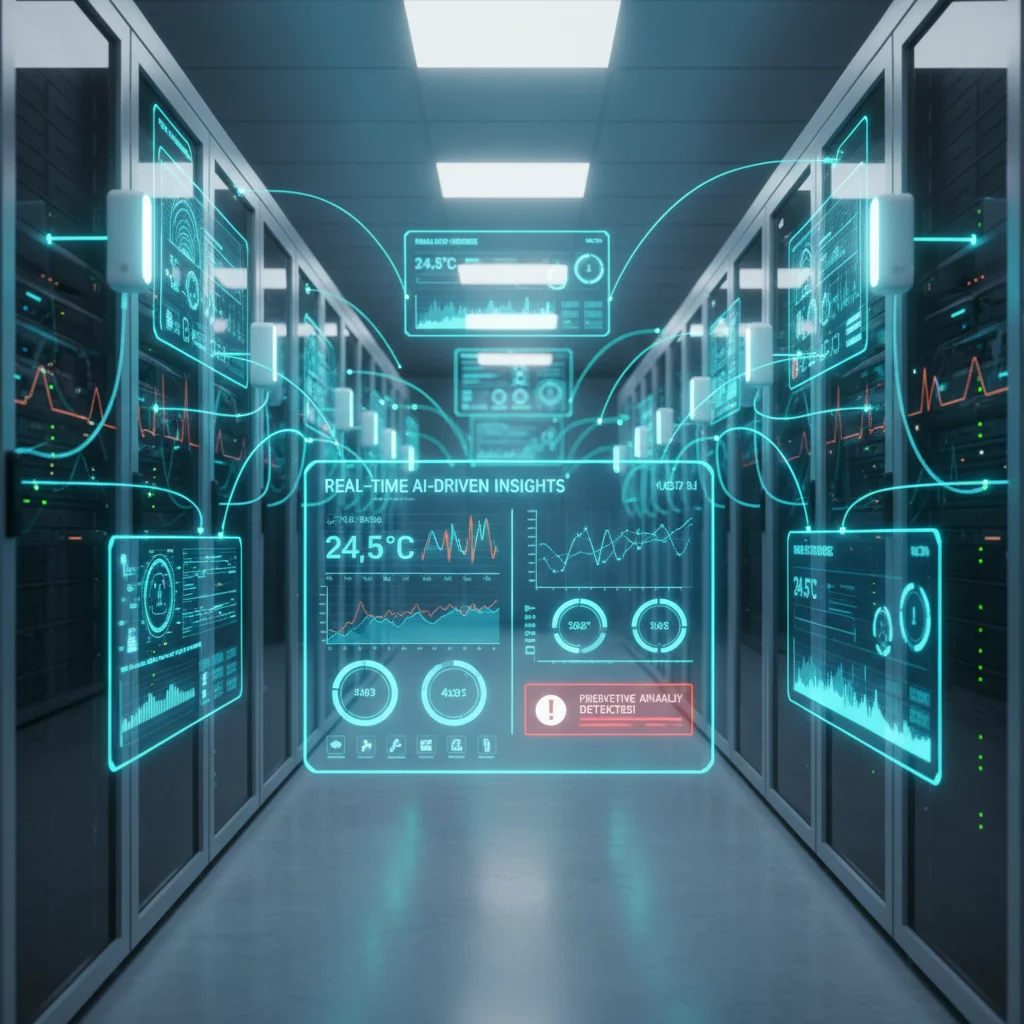Introduction
The digital world revolves around data centers. They host important IT infrastructure that runs everything from business websites to cloud services around the world. Data centers are very complicated, but they are still vulnerable to one simple thing: heat.
If you don’t keep an eye on the temperature, servers and networking equipment can become unstable or even stop working. When a business is down, it loses money, hurts its reputation, and in some cases, it has to deal with regulatory issues. This is why it’s not just a good idea to have a strong temperature monitoring plan in data centers; it’s necessary.
For a general look at monitoring systems outside of data centers, see our full guide on What Is a Temperature Monitoring System?
Why Temperature Matters So Much in Data Centers
Heat and Hardware: A Dangerous Mix
Servers make a lot of heat. Racks full of processors, power supplies, and storage arrays run all the time, usually at or near their full capacity. If not taken care of, rising internal temperatures could:
- Throttling hardware (slowing down computation to avoid a meltdown)
- Make parts like hard drives and power units last less long
- Cause shutdowns that weren’t planned
- Cause huge amounts of data loss
The Domino Effect of Downtime
A problem with cooling almost never only affects one machine. In racks that are very full, even a small change can quickly spread heat. One failure can have a big effect on many systems. The Uptime Institute says that outages cost businesses thousands of dollars per minute, so it’s much cheaper to stop them than to fix them.
Best Practices for Data Center Temperature Monitoring
Strategic Sensor Placement
Putting thermal sensors at hot spots (the tops of racks) and near intakes (the cold aisles) makes sure that both overheating risks and airflow are being tracked.
The ASHRAE Technical Committee Guidelines recommend most data centers operate within 18°C to 27°C (64°F to 80°F), making accurate placement and continuous monitoring of sensors critical.
Continuous Real-Time Monitoring
Checking the temperature every so often isn’t enough. Continuous measurement lets you get alerts before conditions get too dangerous. Check out our article on Check Temperature Online | How to Accurately Measure Room Temperature to see how casual checks stack up against real systems.
Integration with Cooling and HVAC
When combined with smart cooling systems, data center monitoring really shines. Smart HVAC can change the flow of air based on heat patterns, which saves energy and makes the system more efficient. These ideas are similar to how pharmacies keep an eye on the temperature of their medicines, which are also sensitive to climate and need to stay stable.
Historical Reporting & Compliance
For audits, insurance, or proving resilience standards, logs and reports are very important. Reliable monitoring tools save data and make reports that are ready for compliance. Check out our article on Online Temperature Measurement Tools: Pros & Cons for a look at the hardware and software design that went into this.

The Role of Advanced Monitoring Systems
Data centers have needs that are different from those of homes and offices. Simple tools can show changes at the room level, but they don’t have the detail and dependability that professionals need. That’s why advanced systems:
- Allow monitoring from multiple points on each rack
- Put into centralized dashboards
- Send alerts by SMS or email right away
- Connect to fire suppression, HVAC, and security systems
Read our other article, What Is a Temperature Monitoring System? | Complete Guide, to find out more about the differences between a “system” and a “tool.”

Consequences of Neglecting Monitoring
Costly Downtime
It’s clear how much each minute offline costs. In e-commerce, banks, and software services, downtime means losing money right away.
Damaged Hardware
Quickly replacing overheated CPUs, RAID arrays, or power supplies can quickly add up to a lot of money, often more than the initial cost of monitoring systems.
Reputational Damage
Customers want things to be reliable. A facility that is poorly managed and has frequent outages loses credibility quickly.

Temperature Monitoring as Part of Data Center Strategy
Efficiency and Sustainability Gains
As energy prices go up, it makes sense to cool things down in a way that is good for the environment and your wallet. Monitoring helps with strategies for separating hot and cold aisles, changing fan speeds, and getting the best performance from chillers.
Ties With Other Industries
Not only IT benefits. Climate stability is important for healthcare, food logistics, and pharmaceuticals. Monitoring the temperature in a pharmacy, for instance, keeps sensitive drugs safe. The lessons learned can be used in all situations.
From Handy Checks to Mission-Critical Systems
For context, a lot of people are fine with casually checking the temperature online, but professionals need enterprise-level reliability for data centers that are critical to their mission.
Future of Data Center Temperature Monitoring
AI & Predictive Analytics
Tomorrow’s systems won’t just send alerts; they’ll also look for patterns, predict failures before they happen, and change systems on their own.
IoT Integration
Expect every rack, cable, and aisle to have wireless sensors that send data in real time.
Cross-Industry Standardization
In healthcare, IT, and the supply chain, we can already see systems that work together. Shared tech architecture lowers costs and makes things more reliable.

Reliable Monitoring = Reliable Data Centers
You can’t stress enough how important it is to keep an eye on the temperature in data centers. It’s the basis of reliable IT infrastructure because it keeps things running smoothly, lowers costs, and makes sure rules are followed.
IT admins, engineers, and business leaders all know one thing: it’s cheaper to stop something from happening than to deal with it after it happens. Proactive monitoring is what keeps things stable and keeps things from going wrong, whether you’re protecting cloud servers, medical fridges, or important apps.
Check out What Is a Temperature Monitoring System? | Complete Guide for a general idea of how monitoring works. Check Temperature Online | How to Accurately Measure Room Temperature is a good place to start if you’re new to this. You can also check out Online Temperature Measurement Tools: Pros & Cons to learn more about the differences between tools and full systems.
Data centers may be hidden from view, but monitoring makes sure that everything runs smoothly in front of our screens.

